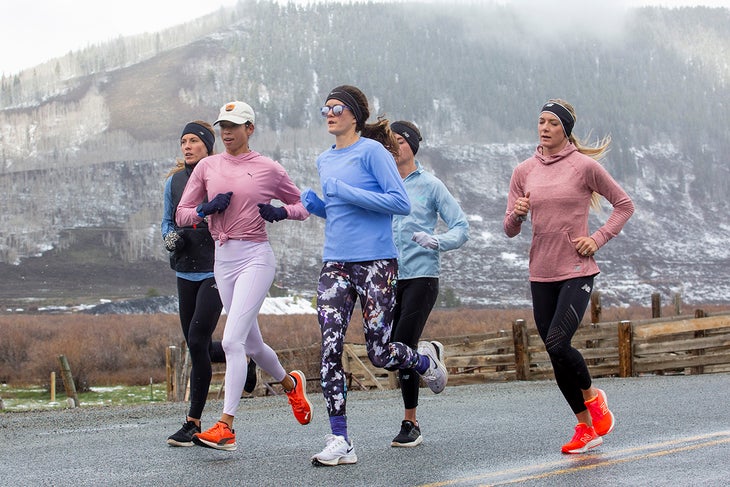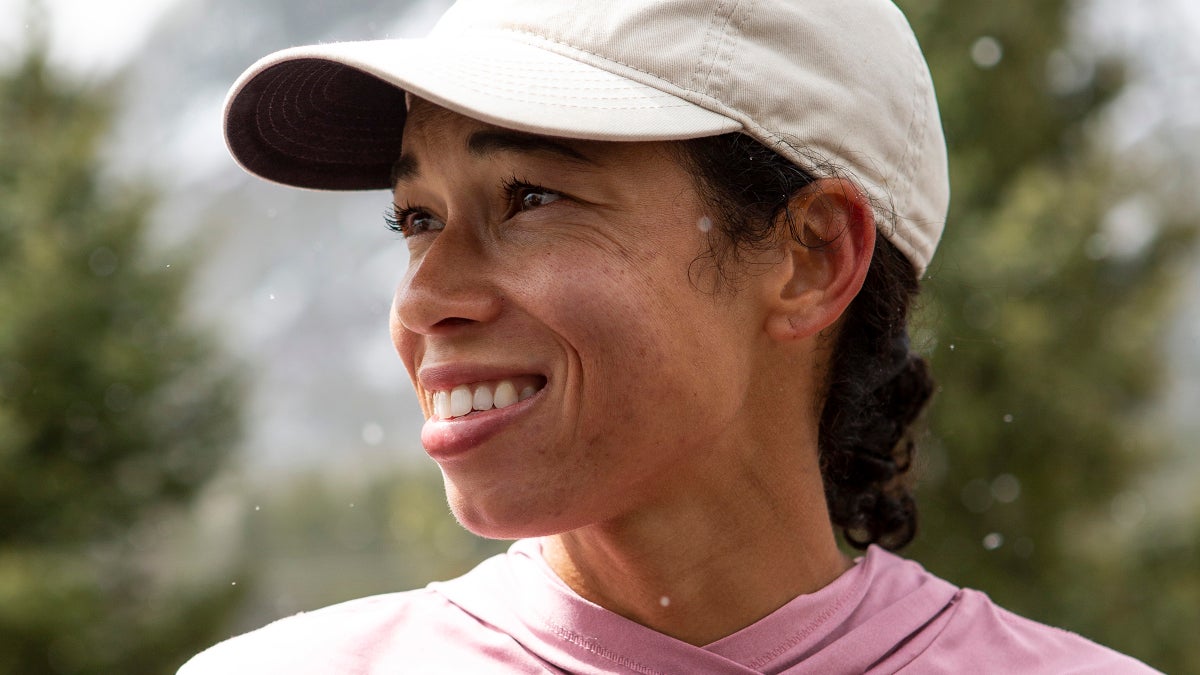Products You May Like
Get access to everything we publish when you
sign up for Outside+.
“And then I heard a pop.” It’s almost the quintessential phrase that precludes a bad injury story, akin to seeing a ghost on a dark and stormy night or meeting fabled royalty once upon a time. But that’s how the meniscus tear happened for Aisha Praught Leer only days before she was supposed to travel to Tokyo for the 2020 Olympic Games—10 days before she was set to represent Jamaica in the 1500 meters.
Praught Leer, 32, was warming up for her last intense pre-Olympic workout in Switzerland when she heard and felt the pop. She was alone doing drills before she planned to meet back up with her team, Team Boss, for the workout.
“I was kind of by myself in an area of the track. And it was a really important day of training so I didn’t say anything,” she says, though she admits it did hurt quite a bit. Other than the knee feeling stiff, she figured she could muster through the rest of the training session.
The following day she ran seven miles with teammate Emma Coburn, even though her knee still didn’t feel better. “I just ran with her because I was in denial,” says Praught Leer. “And then the hammer came down.”
RELATED: Aisha Praught Leer’s 5 Favorite Things
Two days after the initial pop, there was no denying the injury. She recalls waking up to a knee so swollen that she could no longer see the kneecap. Then came the blur of hospital visits, second opinions, and phone calls as her coach, Joe Bosshard, tried to figure out how to make Tokyo still happen for her—despite learning that her meniscus, while itself still intact, had snapped off of the bone. Without that protective barrier in place, every step she took was bone on bone.
It came down to a lot of ibuprofen on the plane, no more than 12 minutes of running per day, getting her knee drained and injected with cortisone, and a lot of time on the spin bike in the Olympic village to get her to the line. Praught Leer wanted to do more than just get to Tokyo, she still wanted to compete. “For me, it was really important that I was able to give an honest effort, rather than just get on the line and jog around,” she says.
When you watch her in the 1500 meter preliminary round, keeping up mid-pack most of the race, you can’t tell just by looking that she’s seriously injured. But she was caught up in the commotion when Netherlands racer—and eventual gold medalist—Sifan Hassan fell in the final lap. “My biggest fear was any jostling because I really couldn’t handle any lateral movement,” says Praught Leer. Getting pushed to her left in that moment was what she calls the “worst-case scenario.”
She ended the race in 13th in 4:15.31, but Praught Leer says she’s really proud of her first three “beautiful” laps.

A part of her wished she could have advanced, but she knew her body couldn’t take any more. “I just felt overwhelming pride and gratitude,” she says. “A lot of people wouldn’t have gone.”
RELATED: Anna Cockrell Reflects on the Olympic Games and the Not-So-Average Year Leading Up to Them
And making that decision to go hasn’t—luckily—come at a detriment to her current health. After Tokyo, she returned back to the United States where she got the necessary surgery and began the process of healing.
“All of my body processes have had time to reset,” says Praught Leer. She says her recovery has been painfully slow and methodical. “But it gave me a chance to just, you know, gain weight, and your hormones reset, and your mind resets and your muscles reset, your tendons reset.” After 12 years of hard training and striving, she thinks her body has benefited from the time off.
“I think a lot of runners fall into—you have a setback, and you just turn back in with strive, strive, strive, push, push, push a little bit too hard. And I think that’s where you end up with some recurring injuries,” she says.
Even now, seven months after the injury, she’s not completely back to her usual training volume of 100–115 miles per week. After four months of rehab and working in the gym, she slowly started adding running back in. She tracked her training in minutes, slowly swapping out time in the gym with time running.
“Last week was my first week running seven days. I ran 70 miles and then cross-trained on top of it,” says Praught Leer. That training load totaled about 790 minutes of effort, which she estimates would equal 115 miles had it been all running.
Seven months might sound like slow going, but Praught Leer was anticipating a full year off of racing. And her knee is feeling good enough that she’s starting to dream about spring and summer racing goals.
“Joe and I decided that I’m going to try to qualify for worlds in the 5K. I’m doing a couch to world championships 5K in about four months, and so far, so good,” she says, laughing. She hopes to go after the qualifying standard in May, depending on her fitness at the time.
“It’s a very steep goal,” she says. “Am I sure that I’m going to get there? No, not sure at all. But I think that with the current way that we’re being so meticulous about my health and getting faster in a sustainable way, there’s a pretty good chance that I can hit it.”
RELATED: Choices, Not Sacrifices, Have Made All the Difference for Aisha Praught Leer
